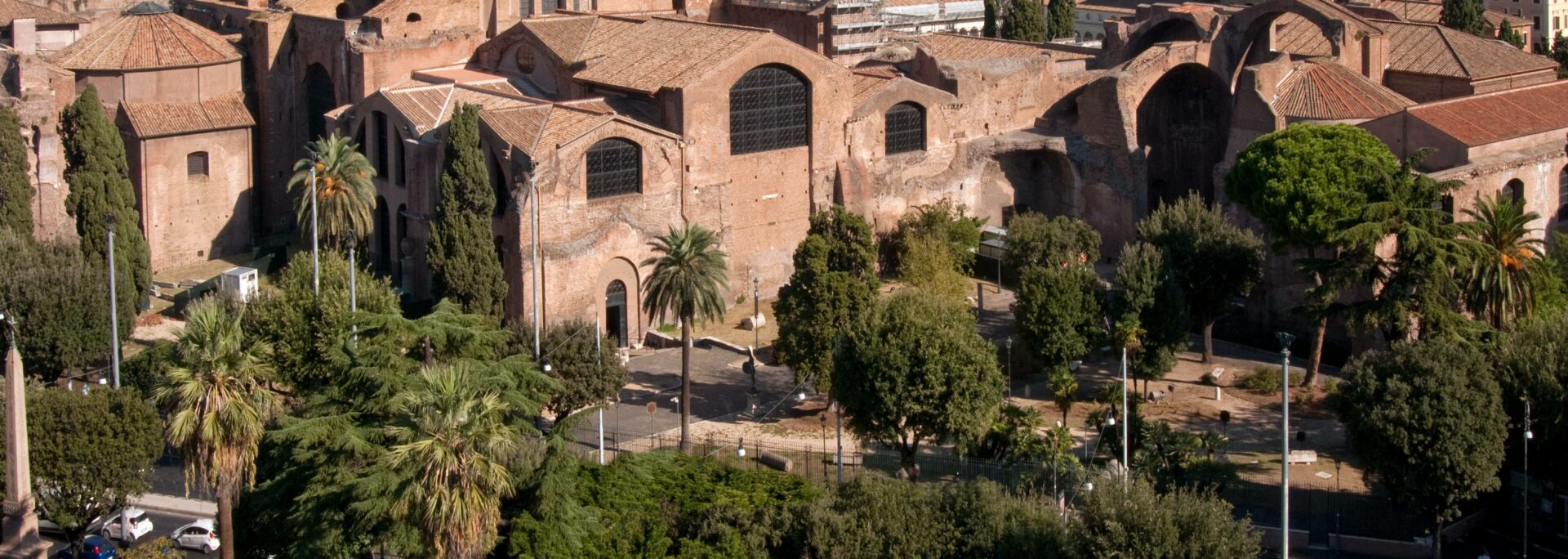The National Roman Museum – Baths of Diocletian

The Baths of Diocletian are a unique monumental complex for the dimension and perfect state of maintenance of the building that is the result of the mix between the cultures of the ancient Rome and Renaissance. People built them in just 8 years – between 298 and 306 b.C. wanted by Emperor Massimiano, who dedicated them to Diocletian, the other emperor with whom he shared the power – in the area between the hills Viminale and Quirinale. Here the complex was structured according to the common scheme of the Roman Baths (the main rooms of the Baths trail are around the central axis) and could host 3000 people.
The complex changes in 1561 thanks to pope Pio IV, after having been abandoned for around 1000 years, and becomes a church and a charterhouse designed by the famous Michelangelo. The church was dedicated to the Lady of angels and Christian martyrs, remembering the several Christians who died during the building of the Baths according to tradition.
Nowadays, this place is one of the branches of the National Roman Museum that hosts, together with the Baths and the cloisters of Renaissance time, the Museum of Written Communication in Roman World and the Museum of the Protohistory of the Latin Peoples and rests and artworks excavated from 1870 in the area of Rome and sorroundings.
According to the mission of the National Roman Museum of divulging the history and culture of the ancient Romans, the visitor with intellective disability can discover this world at the Baths of Diocletian through the exhibited artworks and the architecture of the building.
The visit takes place in huge areas through a wide setting where artworks are distanced and spread along the path, in the best context facilitating concentration. In the guide there are also 3d reconstructions of the areas to explain the changing of appearance between the present and pastime, so that it is easier to understand the contenents and facilitate the connection of the places with the old functions. Also the visit in the cloisters is structured in the same way: the space is wide and outdoors, full of statues to discover.
The trail finishes with the two museums of the Written Communication in Roman World and the one of the Protohistory of the Latin Peoples, whose artworks are well illuminated in showcases in big rooms and with no risks of overcrowding or background noises. Considering the purpose of narrating the ancient Rome culture, the artworks described are groups of objects that nowadays talk about customs and tradition, like the war or the aristocrazy.
There are elements for orienting both in the guide of the Baths and the museums, like the number of the rooms or writings for the exhibition.


Contact the museum before your visit
Via Enrico de Nicola, 78; 00185 Roma
On Saturdays and Sundays: 10.30 a.m. - 7.45 p.m.
Closed on Mondays
Facilities
 Accessible toilets
Accessible toilets
 Resting areas
Resting areas
 Tour guides
Tour guides